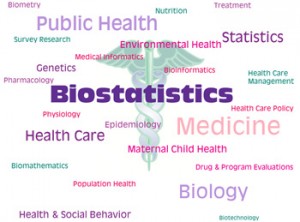 If you’re ever found yourself wondering what is Biostatistics, then you’re definitely not alone. While the field is indeed fascinating, many people are unaware of what it entails specifically. Biostatistics, in short, entails employing statistical science to assess issues in public health. The goal of biostatistics is also to make advancements in biomedical studies and progress.
If you’re ever found yourself wondering what is Biostatistics, then you’re definitely not alone. While the field is indeed fascinating, many people are unaware of what it entails specifically. Biostatistics, in short, entails employing statistical science to assess issues in public health. The goal of biostatistics is also to make advancements in biomedical studies and progress.
Work in Biostatistics
If you have a genuine zest for healthcare, then you might be a strong candidate for an education and future job in the world of biostatistics. People who do well in biostatistics careers tend to have extremely organized and methodical personality types. Work in biostatistics is frequently centered around the study of statistics that pertain to diverse medical conditions such as cancer, lung disease, heart disease, HIV (human immunodeficiency virus) and AIDS (acquired immunodeficiency syndrome). Biostatistics also integrates its statistical concepts into medical techniques such as neuroimaging. Neuroimaging describes imaging that closely captures the operations and processes of the brain.
Life as a Biostatistician
If you achieve employment in biostatistics, then you’re called a biostatistician. The goal of biostatisticians is to carefully evaluate difficulties that pop up in research. They work to establish any scientific queries that call for solutions and explanations. They figure out how to effectively acquire any necessary data. They come up with sampling methods. If you go into this field, you’ll evaluate many different things, whether upcoming AIDS medications, indoor air standards in educational environments, inner ear infections and components that can potentially lead to heart disease. People who are interested in many diverse aspects of the medical realm generally succeed in biostatistics. If you’re fascinated by the ins and outs of everything from medication to disease triggers and keen on helping people understand just what is biostatistics, then biostatistics could just be your vocation. For more information on what the role of a Biostatistician is visit the National Institute of Environmental Health Sciences.
Education in Biostatistics
Many universities all throughout the United States offer extensive biostatistics departments. These institutions of higher learning are Harvard University’s School of Public Health, the University of Minnesota School of Public Health, the John Hopkins University School of Public Health, the University of Michigan School of Public Health and many others. These educational departments have many goals. They aim to employ their effective quantitative abilities to strengthen the health of people all around the planet and to create new statistical practices that can assist in current public health sciences and medicine. Importantly, they also aim to spread knowledge about what is biostatistics to others.
Related Resource: Becoming a Public Health Educator
Biostatistics Job Outlook
If you earn an advanced degree in biostatistics from the university of your choice, your future career outlook is strong. Many job openings exist in the biostatistics universe, whether in education, the government or industry. Biostatisticians are in demand, because there are so few of them working, according to the American Statistical Association. If you complete a Master’s or Ph.D program in the field, there are many job options possibly available to you. Biostatistics masters programs online are a great way for students to become qualified in the field and land their dream job. However, professionals who have Ph.Ds in bistatistics typically earn more than those who only have Master’s degrees in the field. Many biostatisticians work at pharmaceutical companies, in research departments at universities and in healthcare settings.
What is Biostatistics Conclusion
If you think that you might be suitable for a bright future in biostatistics, learn more about the discipline through conducting some extensive personal research. If biostatistics is for you, you’ll most likely be captivated by what you discover.